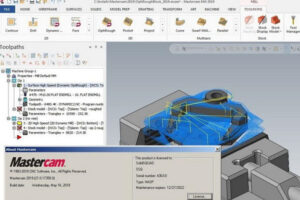In recent years, CNC machining centers have undergone continuous innovation and iteration, resulting in the emergence of three-axis, four-axis, and five-axis machining centers, as well as CNC machining centers for turning and milling composite operations. Today, let’s talk about the characteristics of these three types of machining centers in CNC machining: three-axis, four-axis, and five-axis machining centers.
Three-axis CNC machining
Three-axis CNC machining: Typically refers to three axes with different directions of variable speed linear motion, such as left-right, up-down, and front-back. The three-axis can only process one surface at a time and is suitable for processing disc-type components.
Four-axis CNC Machining
Four-axis CNC machining: In addition to the three axes, another rotating axis is added, usually rotating 360 degrees around the reference surface. However, high-speed operation is not possible. It is more suitable for processing box-type components.
Five-axis CNC machining
Five-axis CNC machining center: Within the four axes, another rotating axis is added, usually rotating 360 degrees vertically. Five-axis machining centers have achieved comprehensive processing capabilities, reducing clamping costs and minimizing damage caused by product scratching. They are particularly suitable for processing multi-position holes and planes, as well as components with high machining accuracy requirements, especially those with strict requirements for external machining accuracy.
Summary
Although the five-axis machining center has a competitive advantage compared to the four-axis and three-axis, not all products are suitable for it. Products suitable for three-axis machining may not necessarily be suitable for five-axis machining centers. If products that could be processed with three-axis machining are processed with five-axis machining centers, it not only increases production costs but may also not achieve the desired results.



